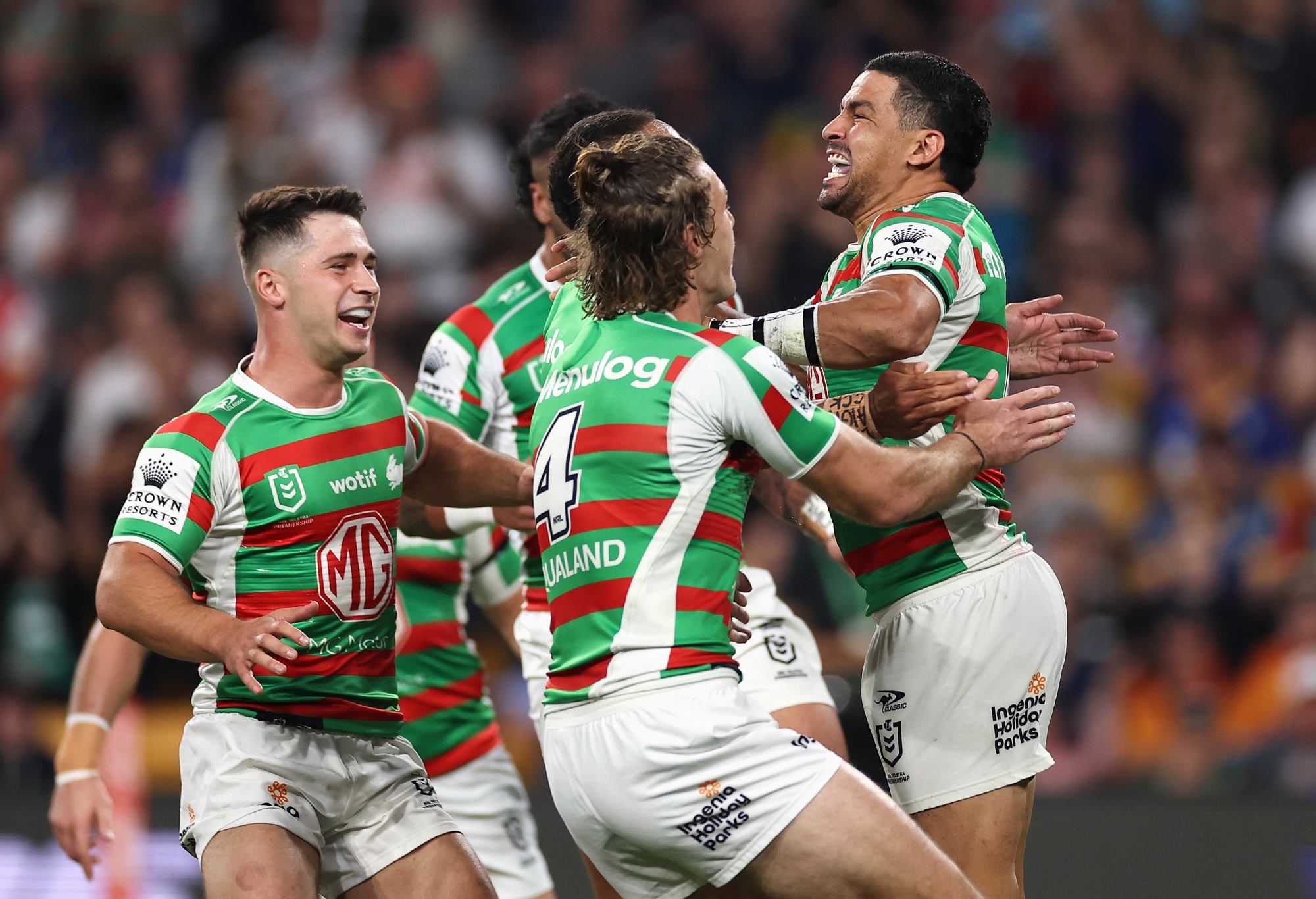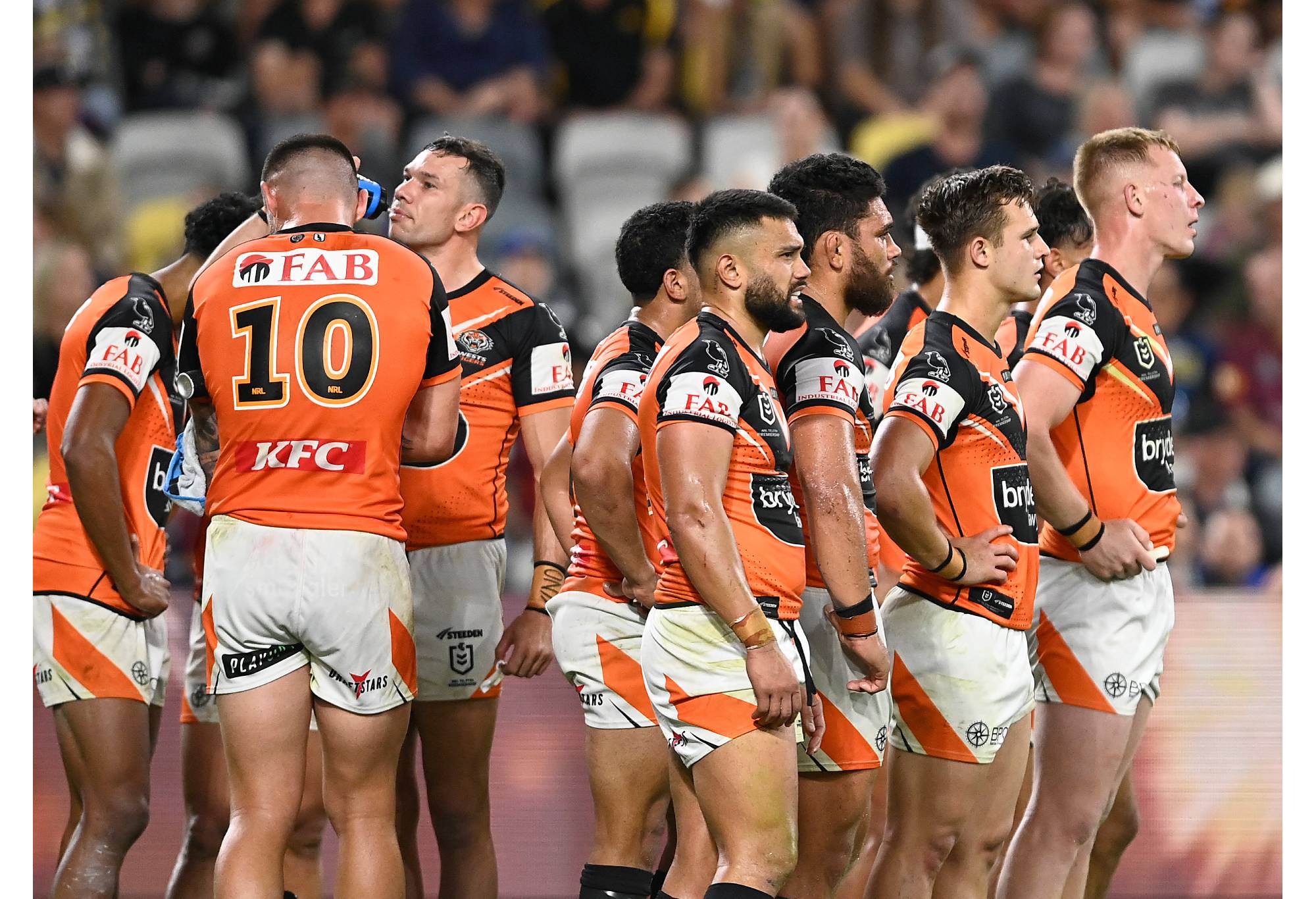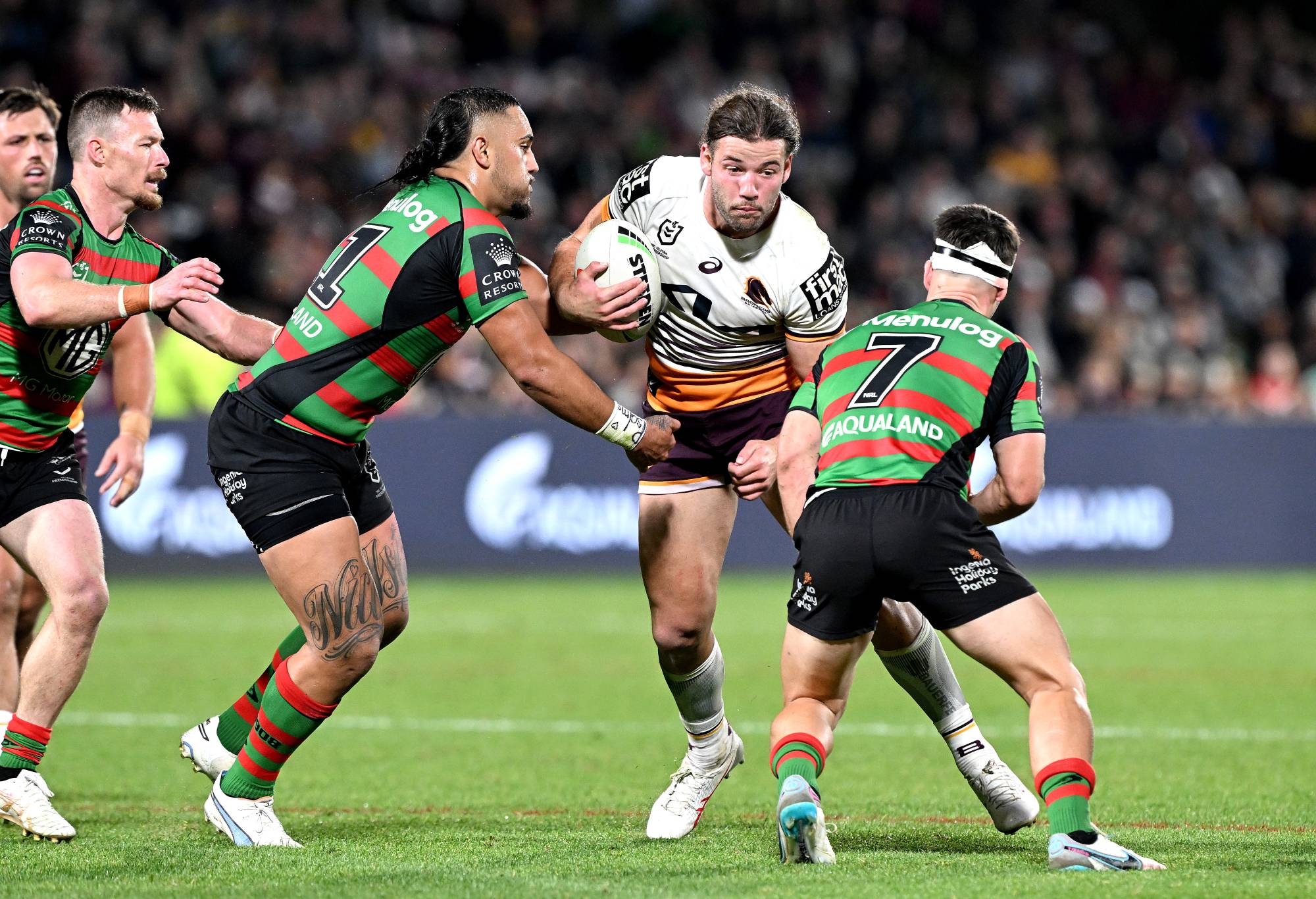Statistics, as the great philosopher Homer said, can be used to prove anything. Forfty percent of people know that.
The relationship between statistics and rugby league has often been a difficult one: people vaguely understand that we do need to quantify things, but haven’t really settled on a set list of things that are worth quantifying, or ever really engaged with the logic behind what numbers matter and in what context.
For anyone reading and thinking something along the lines of ‘the only number that matters is the score’: you’re not wrong.
While there are a plethora of other stats that can tell you plenty about plenty, they’re often presented in a contextless manner that belies any usefulness they might have had.
It’s frustrating, because rugby league is an endlessly countable game that would be greatly enriched by a better understanding of the nuts and bolts of it, and fans would receive a better experience if they were given more relevant information.
With that in mind, let’s count the counters, and work out what is actually useful, what is totally meaningless, and how it might be better presented to improve the experience for everyone.
Missed tackles
This is a super easy one to start with: missed tackles. Missing tackles is bad, obviously, and thus missing multiple tackles is also bad.
But is it? While no player deliberately misses tackles, plenty of them are not bothered about completing them, because the purpose of the tackle can be served without actually getting your opponent to the floor.
To wit: we have just watched an Origin series in which Queensland, for the second year running, deliberately shot the line to stymie the New South Wales attack.
The top in both teams for missed tackles were Val Holmes and Liam Martin, two of the best players on display in the series.
Holmes was clearly under instruction to get into the face of the opposing half, with whether he actually made the tackle a secondary concern.
Martin has made an entire career out of that move, stopping the momentum of attacks if not always actually the attack.

PENRITH, AUSTRALIA – JULY 23: Stephen Crichton of the Panthers celebrates scoring a try during the round 21 NRL match between Penrith Panthers and Canterbury Bulldogs at BlueBet Stadium on July 23, 2023 in Penrith, Australia. (Photo by Izhar Khan/Getty Images)
On a team-wide level, it’s also junky. The Bulldogs and Dragons miss the most, but the Cowboys are third and the Storm fourth. Nobody would accuse either of having a bad defence and, indeed, North Queensland have one of the best.
The Storm conceded 4.2 line breaks a game with 32.5 missed tackles, but the Sharks – the fewest misses in the comp – have more line breaks against, as do the Raiders and Eels. You can only miss tackles that you’re close enough to attempt, right?
So can we do better? Sure. As an individual metric, tackle efficiency percentage works, because you can get an idea of how many a player makes from the opportunities they get, which theoretically would be a high enough sample size across enough games to be useful.
Line break causes, too matter, for the reason listed above. If you’re miles away from your opponent and they go over untouched, you don’t get credited with a missed tackle, but they’ve got through anyway.
Verdict: Bad stat

Cody Walker celebrates scoring a try. (Photo by Cameron Spencer/Getty Images)
Try assists
The next on the chopping list is try assists, a favoured stat for playmakers but one that is struck right through with outcome bias.
We like tries, and therefore, we like assisting tries. But only crediting playmakers when someone actually scores is a whole lot of nonsense, because they can’t control whether their teammate does their bit.
Currently, the try assist kings are Scott Drinkwater, Shaun Johnson Nicho Hynes, Reece Walsh and Cody Walker. Fairly predictable stuff, you might think.
But in line break assists – the non-outcome biased version, Hynes is streets ahead and suddenly Kalyn Ponga and Tom Trbojevic fire up into the top five.
Ponga and Turbo, clearly, are making the play far deeper in the field and, to at least some extent, just have worse finishers. Hynes must lament the several times this year that Ronaldo Mulitalo has dropped the ball over the line.
Try assists aren’t totally useless, mind. A line break closer to the tryline is, obviously, better – it’s more likely to result in a try.
We currently award try assists the same regardless of whether you pass the ball to a teammate on your own tryline and they run through the entire team or if you run through the entire team, then pass the ball to your pal to score.
There’s also the thorny issue of Kick Try Assists – an actually useful stat – that could be spoken about more. It’s mildly interesting to know that Jamal Fogarty has 13 try assists, but very interesting to know that 75% of them were with his boot.
There’s a Try Contributions stat that some outlets offer that takes this into account: it’ll credit someone further down the line, too.
Lachlan Ilias, who is often the man to straighten the defence up before Walker rips them apart, or Jackson Hastings, who does a similar thing for Ponga, would do very well here.
Verdict: Mixed, but could be improved

(Photo by Ian Hitchcock/Getty Images)
Tackles inside 20m
This is one of the most controversial stats, particularly because one outlet mentions it a lot more than the others due to a commercial deal.
While it’s not on the level of the VB Hard Earned Index – which nobody understands – or the Telstra Tracker, it’s not far off.
Tackles inside 20m is good at telling you that a team can accumulate pressure, but also that they’re awful at attacking in good ball. The Tigers are currently second in the NRL for it behind the Panthers.
If you have a good short kicker – a Nathan Cleary or, as mentioned, Jamal Fogarty – then slowly building pressure over time is a good tactic.
Crucially, though, not everyone is even trying to do that and plenty of sides will use every red zone tackle as an opportunity to score, rather than camp on the opposition goalline.
Souths and the Broncos would be top of this list, both because they don’t hang about with the footy and, as logically follows, because they’re really effective at scoring once in position.
Brisbane are last for forcing drop-outs, aka building sustained pressure, and Souths barely even attempt them – they’re last for attacking kicks when weighted for how much ball they have. If there was a stat for ‘held on last tackle’ that was publicly available, Ilias and Walker would be right at the top.
The drop-out is big here: given that almost all teams attempt short drop-outs now, at least when the game state is level or close to it, being able to force a lot of repeat sets can just play into your opponent’s hands.
There’s a better option, too. Tackles inside 50m is a good way of expressing where the game has been played, or a simple territory split, which is how Super League tracks it.
Verdict: Bad stat

(Photo by Chris Hyde/Getty Images)
Completion rate
This is the easiest catch and kill here: completion rates are nonsense. They don’t correlate to winning and, often, really bad teams have high completion rates because they play boring football whereas very good teams have bad completion rates because they try to attack.
It’s not really a discussion, so instead, what could replace completions as the most talked about measure of how well a team is getting through their rwork?
Speaking recently to a high-level coach, The Roar was told about tracking specifically “completions after points”, which tracked how tidy a team was on their most conservative sets, when they simply wanted to consolidate.
Similarly, a former Grand Final coach mentioned that he tracked ‘deep completions’, which were measured from sets that began defensively, because that was where you would want to not make errors. Despite almost every coach and pundit mentioning ‘yardage errors’, no public provider actually gives a number on this.
The same elite coach also suggested that completion rates could be useful if they only tracked plays 1-4, or if they differentiated between plays in which the team had made a certain amount of passes.
Dropping the ball doing nothing interesting with it, obviously, is bad, but trying to score on play one when the opportunity arises shouldn’t be punished.
Clubs with full-time analysts will likely do this, but not every club has that, or, indeed, has a coach that would listen to one anyway. Old habits die hard.
Verdict: Bad stat, but could be expanded into something useful

Patrick Carrigan. (Photo by Bradley Kanaris/Getty Images)
Possession
Who had the most of the ball should be a relatively easy thing to track, right?
Holding the ball for a long period of time is good, in the sense that if you have it then your opponent doesn’t, but often that results in protracted periods of ‘negative possession’, where a team holds the footy but doesn’t do a great deal with it.
This isn’t always bad: if you’re looking to see out a game, then making your opponent make tackles then kicking as long as possible is a pretty good tactic.
But in the general scheme of things, completing for completing’s sake, and holding the ball without doing anything with it, are good ways not to score any points.
Possession is measured by a simple time split of who has the ball, rewarding a team that plays slowly.
Again, Brisbane are often punished in this department: they’ll finish with less possession, but equal or more in terms of plays and sets.
The Broncos are top for total sets, but middling for possession. The Dragons are right next to them in possession terms, but dead last for total sets.
Total sets is a much more equitable way of describing who had the most footy, or simply counting how many play the balls a team had.
Verdict: Mixed, but can be improved

































































































